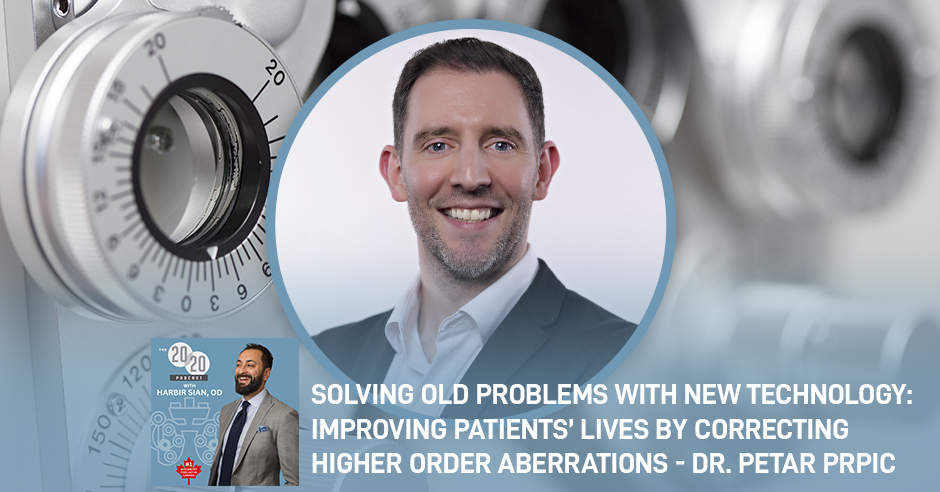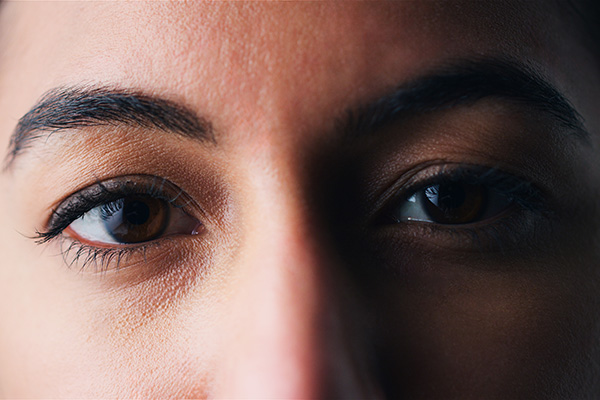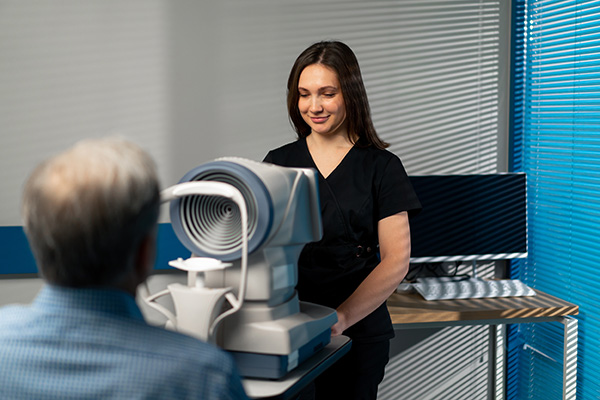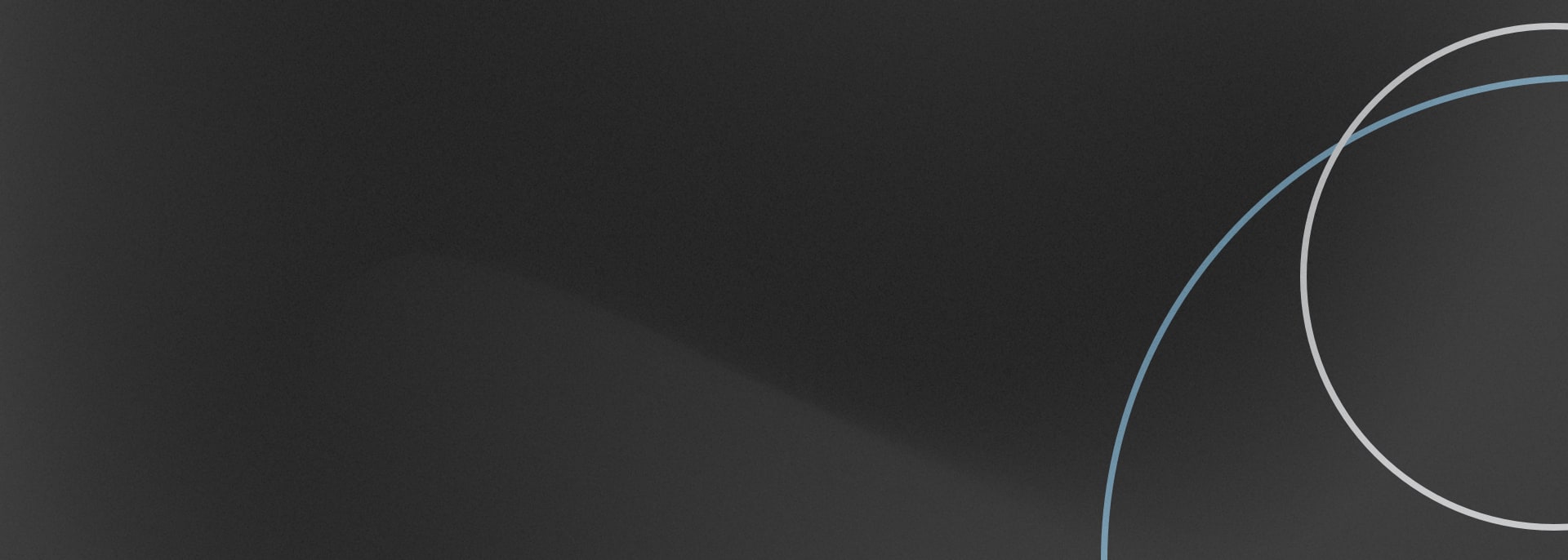
In the previous episode, we spoke with Dr. Petar Prpic about how he built his specialty lens clinic (Prpic Eyecare). In that discussion, Dr. Prpic touched on some of the challenges he faced in his journey to developing his expertise in the realm of specialty contact lenses.
In the second part of this discussion, we dive deeper into one of the most common challenges that all ECPs face (not just specialty lens providers); higher order aberrations (HOAs).
In this episode, we discuss what the difference is between regular aberrations and HOAs. How does a patient who is suffering from HOAs present? What are their symptoms and complaints? And, ultimately, how can we help these patients who can’t seem to get the resolution (literally and figuratively) that I looking for?
This episode is sponsored by Ovitz.
Learn more about the Ovitz xwave Aberrometer at www.Ovitz.us
—
Watch the episode here
Listen to the podcast here
Solving Old Problems With New Technology: Improving Patients’ Lives By Correcting Higher Order Aberrations – Dr. Petar Prpic
Thank you so much for taking the time to join me here, as always, to learn and to grow. I am always so grateful for all the support, the liking, the sharing, and the commenting. When you text me, message me, DM me, or whatever you do, I appreciate it. My favorite things are when people DM me. Even if you disagree with what I talked about on the show, I appreciate that because what I want from these conversations is thoughtful conversations, thoughtful debates, and something that’s going to help us all be better and continue to grow as a profession.
This episode is a follow-up to our previous episode with Dr. Petar Prpic. If you haven’t read the first one, I highly encourage you to go back. In that first episode, Pete and I laid the foundations of how he built his specialty contact lens business, and how a lot of the lessons that Petar has learned in his journey translate into any other practice and any other specialty. I highly encourage you to go back and read that.
As a reintroduction, if you haven’t read that first episode, my guest is Dr. Petar Prpic, who graduated from NECO in 2013. He’s a recipient of the NECO Presidential Medal. He’s a fellow of the Scleral Lens Education Society. He is a Co-owner of Prpic Eyecare Centre, a beautiful practice in North Burnaby, BC, with his brother Ivan Prpic. I’m going to give a shout-out to Ivan. He is a new dad. Congratulations, Ivan, on having your baby boy.
Back to Pete, Petar is a board member with the BC Doctors of Optometry. He’s the chair of the CE committee, so he’s highly involved with all the education that goes on here in BC. He was crowned Young OD of the Year in 2019. He is an expert in the field of scleral lenses or specialty contact lenses. That’s what we’re going to dive into.
In the last conversation, it was a bit more general, like what types of lenses does Petar fit in his office and the types of patients he’s helping. One of the topics we touched on in that episode was higher-order aberrations and how that is one of the confounding factors when we’re fitting sclerals. In this episode, we’re going to dive deep into HOAs, aberrometry, and how we can help our patients take our scleral lens or specialty contact lens fitting to a whole different level.
‐‐‐
Petar, welcome back to the episode. Thank you for being here again. I appreciate it.
Thank you. It’s great to be here.
As I teed up there, we’re going to be talking about some of these more special, detailed things about scleral lenses. Before we get into that, I want to go back to something we touched on in that first episode, which is some of the challenges that you have when you start to lean into any specialty. For me, the first specialty I dove into was dry eyes a couple of years back.
I found that once you start becoming a bit of an expert, a lot of these more complex cases start to come out of the woodwork pretty quickly. Some of them are hard to fix and hard to treat, but as you get better at it, you start to learn and adopt some new technologies. I want to get into that. What were some of the snags or the challenges that you were hitting and the complex patients you were getting in this field of specialty contact lenses?
As my practice grew and I was fitting more patients, you’d have those slam dunk patients, the ones that you think are a breeze, and it’s like, “This is why I love doing this.” You then get to the ones where you’re scratching your head. You’re hitting your head against the wall, wondering, “What’s going on? Why isn’t this working? Why can’t I solve this patient’s problem?”
There is a disconnect between why some patients would be so successful in these modalities and have the same condition. This next patient walking through my door, why isn’t this solving their problems? Some of that was as you see enough patients and you get more diseased eyes, sometimes, it was the capabilities of the lens design.
There are certain ocular conditions. There are certain shapes of their eyes that make this fit a challenge. Being able to offer things that help fit the eye a little bit better has been fantastic. It has opened up the door and the opportunity to cater to more patients and provide care to some patients who need it. That’s from a fitting perspective.
There’s also that visual component. There are some patients whom you put a lens on their eye and they’re extremely happy, and then there are other patients who would struggle with their vision. You think, “This should be the perfect candidate for this lens to work.” You’re wondering, “Why is that happening?”
You have enough patients coming through your doors. I was fitting enough lenses that there were patients that would come in either with those struggles or patients that would come in and say, “I’m happy, but.” There’s always this but. They’re better, but are they 50% better? What about that other 50%? For some people, this residual concern or residual problem, sometimes, is 1% or 2%. They notice it, but it’s not impacting.
There were enough patients that I was seeing that it was significant enough to impact their lives where they’re saying, “I’m happy, but,” or, “This is better, but that’s worse.” I had had enough of those patients that I started looking into, “What can I do for them? What else can I offer? What else can I design? What else can I do to help with the other 50% of what they’re struggling with?”
Beyond 20/20: Unmasking Hidden Vision Issues
What were you finding was the common denominator with a lot of these patients that were happy, but? We’ve all had in our practices the 20/20 patient, but not the 20 happy patient. They’re seeing well, as far as we can tell, on the chart, but then something’s not lining up for them.
Some of them are obvious. I had some patients who would say, “My vision is better. I can see more clearly, but the glare is worse.” Some of it was very apparent and obvious, and some of it was more subtle. It was like, “I’m happy, but this environment is still a concern. I’m still noticing a glare with nighttime driving. I’m still noticing halos around lights. I’m still noticing some of that monocular diplopia and some of these things in certain environments.” Depending on what they do for work, and depending on the environments that they’re putting their eyes in, for some people, that can be significant.
The cause of that is these higher-order aberrations, which we’ve been touching on. Can we define what higher-order aberrations are? How would we go about looking for those?
How I wrap my head around this is that there are slight deviations in the optics of the light entering the eye. A lot of these deviations come from corneal irregularities, some irregularity on the front surface of the eye. How I explain it to patients is to think about looking at a pond of water. If you have a pond of water with a nice, smooth, uniform surface, you can see deep into that water. The optics of light get refracted very cleanly through that surface. Now, imagine you throw a rock into that water. You have all those waves and ripples, but you can’t see them as clearly because the optics of light get refracted in these very weird waves.
That’s how I explain it to my patients. There are these residual irregularities on either the front surface of your cornea or the back surface of your cornea. Something through the optical pathway is hitting your retina that’s causing this irregularity and is leading to these halos, this glare with nighttime driving, and this monocular diplopia. That’s what’s causing it.
There was always a challenge to connect to my patients in these ways because I had no way to quantify this. I had no way to explain this and show them what’s going on. It was that they’d come in and I’d say, “Okay,” but not know how much of it is going on or how this person is going to be impacted by this residual aberration or not. That’s how I approach it and how I think about what these aberrations are.
I like that analogy of the pond. That’s a very easy-to-understand analogy and relevant. You can see clearly when the water’s still. Even if there’s a little wind that comes by and creates some minor ripples, all of a sudden, that causes a lot of issues. In some cases, there are larger ripples and different levels of aberrations that our patients may be experiencing. In general, or in the past, how would we have gone about measuring these higher-order aberrations, the type of technology we’d use as aberrometry, and the science behind that? What does that look like?
To even take a step back from that, I heard this tip once from another special lens provider. They said you can almost do a point spread function test in your exam room with your chart.
Good old point spread function. When was the last time you heard the point spread function?
In most acuity charts, you can put a white circle on a black background. What you do is get the patient to view that, whether it’s with their glasses, whether it’s uncorrected, or whether it’s with their traditional contact lens, rigid lens, scleral lens, or whatever it may be. You have them look at that circle, and you ask them, “Does it look like a distinct white circle, or do you notice that there’s some stretching? Do you notice that there’s some glare or some doubling?” Sometimes, they’ll see multiple circles.
This is a way for you, very quickly in your exam room, to get an idea of whether there is any ongoing residual higher-order aberration. If there’s none of that residual higher-order aberration, they’re going to see that circle as a distinct white circle. If they say, “There’s a tail,” that can be some coma. There are different types of higher-order aberrations, Zernike polynomials, and things that I’m not an expert in.
Different types of higher-order aberrations are going to look different or appear in different ways. Sometimes, monocularly, they’ll cover their eye and say, “I see three circles. There’s the main one. I see that ghosting or that shadowing. There are two more. There’s a circle, but there’s a tail. There’s a starburst. There are three little tails coming off it.” That’s honestly a quick and easy way to do that in the exam room and get an idea of how much is going on.
Even before you quantify it any further, get an idea. With this diagnostic scleral lens on their eye, how much are we improving what they’re struggling with? This helps direct you to get an idea of whether you are going to hit that wall, or whether you are going to have that patient who’s happy, but. That’s a quick and easy way to determine where you’re going to start.
Then comes this idea of aberrometry. There are devices that are out there. Aberrometry or aberrations is not a new thing. It’s been around for quite some time. Using an aberrometer could quantify those aberrations. Some of the things that I’m excited about with what Ovitz can provide are that not only can we quantify it, but they can have visual simulations to show the patients, “Is this what you see at night?” They’ll say, “Yes.” They’ll be able to connect with what we’re talking about a little bit better. There’s a way for them to see, “I’m not going crazy.”
The optometrists are telling a patient, “Look how good you can see on the chart. I got you to 20/20,” and then they leave, and they’re struggling. It’s a way for us to not only quantify the amount of aberration that’s there. Have that discussion and build that trust and connection with the patient about our understanding of what they’re living with and struggling with. It also provides us with an opportunity to solve the problem, too.
There’s a lot to unpack there. I love the analog quick and dirty in the exam room way to check for higher-order aberrations. It’s a white dot on a black background.
Most digital charts should have that.
There was something you mentioned in the previous episode. I don’t know if you maybe quickly skipped this one. Aberrations, in general, you say you would refer to as blur. Lower-order aberrations are you’re minus one and uncorrected. If I put glasses on, I’m taking care of the lower-order aberrations, but the higher-order aberrations are those little ripples.
I came up with that explanation to try to help patients understand. We’re talking about languages that they’ve never heard these words before. I say aberration is another fancy word for blur. The lower-order aberrations are the things that we deal with day in and day out when prescribing glasses and contact lenses for our regular patients. They leave happy and don’t come back with any complaints, truly. When you have these higher-order aberrations, they are reasons for blur that patients are struggling with that we can’t correct with traditional refractive modalities.

The Ovitz xwave Aberrometer: A Scleral Lens Fitting Game Changer
Let’s talk a little bit more about the science behind the technology. You have it in your office at Prpic Eyecare, since Petar has dove deep into specialty contacts and does the molds of the eyes and all that kind of stuff. The xwave from Ovitz is another one of the pieces of tech that you’ve brought in. Tell us about when you brought it in and what it’s been like to implement it.
It has been fantastic. I had had enough of these patients building up in my practice, the ones that are the happy, but, and the ones that you want to do more for, truly. You sell them on this idea of a scleral lens and promise them, “You’re going to love this. It’s going to solve all the things that you’re coming in with.” All of a sudden, you hit that wall where it’s better, but.
I think of a specific case where a patient was amblyopic in one eye and had keratoconus in both eyes. In his non-amblyopic eye, he was struggling with his vision as the keratoconus had progressed. Coming in and fitting him with the sclerals, I’m thinking, “This patient’s going to love it. This is going to be a slam dunk.” His exact words were, “I can see clearly on the chart, but the glare is worse.” I thought, “No way. This doesn’t make sense. Why is this patient struggling?”
Having the aberrometer here, we were able to measure and quantify his aberrations with and without the lens. It was true. If you think about the aberration, because it comes from so many sources, what the patient notices is the total aberration of their eyes and optical system. There are some cases where you slap a scleral lens on the eye. The scleral lens only covers the front surface of the eye. What if there’s a lot of residual aberration from the posterior corneal surface? We’re amplifying that, and the patient’s noticing that more, even though we’re correcting other things.
This patient was one of those very obvious cases where a traditional, regular scleral lens wasn’t providing him the relief that we were hoping for. Being able to quantify as opposed to thinking yhe patient doesn’t know what he’s talking about or it’s something with the over-refraction, and being able to discern what was going on right off the bat makes life way easier.
Being able to bring the X-ray aberrometer in from Ovitz, quantify the amount of aberration, and show the patients what they’re struggling with and what’s going on has been instrumental in connecting with patients. Being able to build that trust with what we’re doing and why we’re doing it, and not being a source of, “You told me, but,” and me not having any explanation or reason for why. Not only can I quantify and say, “You’re right. Your aberration is worse. This is why you’re noticing more of that glare, but I now have something that I can offer you to correct that residual higher-order aberration as well.”
Aberrometry In Action: Unlocking New Solutions For Existing Issues
That’s amazing. That’s a great example of a perfect case where it was valuable to you. That’s something that’s interesting to think about. You think, “I’m about to help this patient. It’s going to be amazing,” but you initially may not think about the fact that you’re amplifying an existing issue. When their vision is blurry, they’re not noticing it as much as when you try to make their vision more clear.
In the last episode, which if you haven’t read it, please go back and check it out, we talked about creating this algorithm for how you adopt a specialty and integrate it into your practice, the patient journey, the staff training, and all that. When you bring in an advanced piece of tech like this, you have to make sure it integrates into all of that. How did you go about addressing all of that with this new piece?
I don’t have any experience with any other aberrometers. Aberrometry isn’t part of what you think of most optometry offices in primary care. What it comes down to is even if you had an aberrometer and you were able to quantify and measure, “This is what’s going on,” there is not much you can do about it. I show the patient, “This is why your vision isn’t as good as you’d like it. This is why you’re struggling.” They’re like, “Doc, what can I do about it?” I’m like, “Not much.” The idea of aberration aberrometry for primary optometric care generally hasn’t been a thing.
There have been a lot of aberrometers that are out there. There are a lot of devices that can quantify it. What Ovitz has done and what they’ve been able to figure out is make it seamless for me to have this patient do this scan and integrate that data with ordering a lens. They make it very easy where their team and their consultants can design that HOA correction and talk to the labs directly so that we can order a lens. It’s seamless and simple for us to implement into our practice.
Step one, proceeding in this way, is always fitting a lens well. This aberration correction won’t work if a lens is not fitted well, if that lens is moving, or if that lens is rotating. That’s the thing. A scleral lens is the perfect vehicle for us to offer this aberration control. This has been tried in spectacles and other types of optical corrections. The problem is that those corrections are not as stable on the eye. They’re not able to keep that aberration or that correction where it needs to be. If your pupil is moving relative to that device, or if that lens is rotating or shifting on your eye, it’s not going to work. It’s not going to make things any better.
A scleral lens is the perfect vehicle for aberration control.
A well-fit scleral lens that is locked into place is a perfect vehicle for us to provide this higher-order aberration and provide these optics to do that. How does it do that? I’ll backtrack a little bit here. I should have said this right off the bat. I like to explain to my patients that it is the same principle as noise-canceling headphones. Sound travels in waves. If we know what the sound wave is, and we can offer the inverse of that sound wave and overlay it, that’s how we can use noise-canceling headphones.
The same thing can occur with the optics of light. If we know how that light is entering our eye and through that pupil, and we can almost apply the inverse of that aberration, we can neutralize these higher-order aberrations. That’s how it works. In order for us to do that, we need to measure it through a large pupil and make sure that if we’re going to put this on a scleral lens, that lens is lined up how we want it to be lined up.

You have to fit them in a regular scleral contact lens first.
You have to fit them in the lens that is going to be able to apply this higher-order aberration correction. It has to be a lab that offers this aberration control.
First, you fit them in the lens, and then you do the aberrometry on top of the lens.
What you do as a process is you fit a lens, and it has to fit well. What you then do is you order a lens with some markings. Those markings tell the device where to put the aberration relative to the lens. You can’t put it in the center of the lens, because what if that lens is sitting a millimeter down? It’s still stable, but it’s not lined up perfectly with their pupil. For example, their optical center. If that lens is rotated five degrees or if that lens is sitting down a millimeter, we need to know that.
There are a bunch of markings that come on that lens. You put the lens on the eye, you give it time to settle, and then you repeat the scan of the higher-order aberration scan with the xwave aberrometer over top of that marked lens. It gives you and Ovitz an idea in the lab where to apply or where to put that HOA patch onto that lens. It’s seamless in the sense that we fit the lens, order in a comparable lens, the exact same lens, with these markings on, do the scan, and then order again the next lens through Ovitz to get the HOA correction.
The first part of your process is the same as pretty much any scleral lens fitting that you’re doing, except you have to get this from a specific lab. How about running the actual test? Is the staff doing that? Is it pretty easy for them to navigate the device?
It’s something that staff are easily trained to do if need be. For most devices we have, it’s like, “Line up the doc. Get the patients to look a certain way.” The machine does the scan on its own. Once you’re lined up, or once you’re in the right focus, it automatically takes those HOA measurements.
You showed me the device earlier. It looks a lot like a small topographer or something like that. It doesn’t take up a ton of space. I was expecting something a lot more of a contraption, but it’s a very streamlined little device. That’s nice. Your fitting process doesn’t sound like it’s all that different than when you’re fitting your most scleral lenses. Staff training wasn’t significantly different from whatever training they already had. Overall implementation has been pretty easy.
It’s been great. It’s about making sure the staff understands what we’re doing right and what’s going on. Honestly, being able to be on their website as Find a Provider through Ovitz’s website has been fantastic because I’ve had patients seek me out. Patients are reading about these things and are aware of things that can improve their struggles, whether they’re in forums, Facebook chats, or on Reddit. There are threads that go into this device and aberration control. There have been some patients who have been fit elsewhere who are happy generally, but still struggling with certain things. Se4eking us out to improve on things makes things a little bit better and solves their problems.
Navigating Keratoconus: Understanding The Patient Journey
That’s such a good point. Especially with patients like this who have gone through a lot and feel like they’ve gotten to the end of the road, and they’re looking for a community and for more information, those patients are usually doing a lot of research in Facebook groups, Reddit forums, and things like that. Tell me about how much of that you’ve experienced yourself, the patients seeking you out who’ve had somebody else tell them, “This is all we got.”
There have been patients who have found us and sought us out for exactly this reason. Most of why I fit scleral lenses are for keratoconus. The disease is way more prevalent than we would’ve even thought. Now that we have fantastic devices to screen patients and diagnose early, we are realizing and understanding that it’s way more prevalent than it used to be.
Higher order aberrations are more prevalent than we thought.
Whenever I see a brand-new patient with keratoconus, either as a consultant or one of my patients, I say, “Where are you on your keratoconus journey?” I truly understand these patients are on a journey. There are some patients who would say, “I was diagnosed a month ago. I don’t know what this means and how this is going to impact my life.” There are those patients who say, “I’ve tried every lens and everything out there, and I’m still struggling.” They’ve been through it all. I always like to ask that.
It’s the ones that are either not aware of what’s going on and the opportunities for us to improve things, or the ones that have struggled with some of these lenses and some of these fits in the past. Some of them were my patients before, where we’d hit a wall and I had nothing else to offer them. We have the opportunity to quantify their struggles and improve on an offer, this HOA correction through Ovitz, as a way to improve their vision. It’s been fantastic.
That’s wonderful. I like that question to ask. We’re trying to draw parallels with other specialties and things like that, but that’s a great question to ask a patient. “Where are you along your journey for this particular whatever?”
Whether it’s dry eye or whether it’s anything else.
That’s a good question to ask. I’ve done that. I’ve made the mistake of not understanding where the patient is. I’ll say, “We’re going to try this, this, and this.” They’re like, “For two years, I did that.” It makes me look a little silly. The patient doesn’t trust that process quite as much. They’re not as invested. Once you’ve learned that, you’ve understood their backstory, and you’ve asked them the questions, they’re a lot more bought in, and they trust you a lot more. That’s a good question to ask.
On that note about the prevalence of keratoconus, I swear we were taught it was a much lower prevalence. I don’t even see that many keratoconus patients. I feel like I’m seeing them much more regularly than we were taught. Also, I don’t remember being taught that there’s a lot of South Asians or East Indian population that has keratoconus, but I see a lot of them in our office. We see more of that demographic in general, the South Asians. I know probably ten people personally who have keratoconus. That’s a way higher number than I would’ve expected. What are your thoughts on that?
Same thing. I remember being taught in school that 1 in 2,000 patients had keratoconus and thinking, “It’s not that many.” Even the idea of when keratoconus progressed and when it became a thing, I remember thinking, “It’s later on in their life. It was in their late teens, closer to 20, and 1 in 2,000.” I remember that being in my head.
It’s the same thing. You start seeing more and more patients. Especially with a lot of the specialty lenses I do, I remember thinking there is a lot more keratoconus out there. We have newer data to support that it’s much more prevalent than we thought. If you look at the studies that showcase or explain a lot of those numbers, the 1 in 2,000, how they were diagnosing patients with keratoconus was retinoscopy and keratometry mires. It was not tomography as we now know it.
We have the ability to catch these patients at much more subtle levels of keratoconus. There are so many keratoconus patients that are out there who are struggling, but have never been diagnosed. It’s the ones that are mild forms of keratoconus that are out there. Their vision’s not perfect, but it’s good enough, so they’re not caught in the average optometry office. They’re not caught in the routine exam. They’re not struggling enough to dive any deeper, but they know, “My vision’s not as good as my colleagues, my friends, or my spouse’s.”
Some of the newer data is saying that it’s closer to 1 in 500. It’s hard to compare the studies. A lot of them have regional differences. A lot of them have the nuance to say, “What’s the real number?” We don’t know what the real number in regards to that prevalence is. We might not ever know what the exact number is going to be. It’s out there, though. I’ve spoken to my colleagues here about keratoconus. I truly believe that we need to do a better job as primary ODs to catch it and diagnose it because it’s there. It’s in our chairs.
We, as primary OD’s, need to do a better job to diagnose keratoconus.
When was the last time you used the old-school keratometer and checked the mires? It was like, “No thanks. I got a nice topographer. I don’t need to do that.” That makes sense. That goes with a lot of other diseases and conditions in the past. All of a sudden, it seems like the prevalence is skyrocketing, but we figured out how to look for it, find it, and diagnose it. That makes sense.
We have a general primary care practice. We do a fair bit of myopia management and dry eye. I’m only getting into sclerals and specialty lenses, but I’ve been seeing these keratoconus patients come through on a very regular basis, so those numbers didn’t quite add up. That piece of information is important, too.
If there’s a primary care OD reading this and thinking, “Scleral lenses or specialty maybe doesn’t apply to me all that much,” I bet you there are more keratoconus patients coming through your office than you think. Like with any specialty, if you want to decide if dry eye is right for your practice or myopia management is right for your practice, look at how many patients you have in your chair. Don’t worry about external marketing. How many people are already there?
As we talked about in the last episode, if you’re already seeing enough of those people, that specialty could probably do fairly well to start. You then start doing that other external marketing. You get the referrals and do the other stuff. I know you’re a numbers guy. We’ve talked about this a couple of times in this episode and the last one. You do like to look at the metrics. How would you say Ovitz has benefited your practice on that side of things?
Elevating Patient Care: The Quality Of Life Impact Of Advanced Optometry
It’s something that has been able to benefit our practice in the sense of purely patient experience and patient care by being able to offer them solutions to their problems, things that we wouldn’t be able to offer, and things that other providers aren’t offering. Having those patients that are seeking us out, having patients that are truly struggling, and being able to provide them with a solution and live up to our promises.

I’m always amazed at how well this is working in our practice. Especially at the beginning, you bring in your device. You hear other people talk about other experts and their experiences. You think, “I hope I’m going to be able to mirror that.” Since we’re able to provide what we’re expressing to them and have been able to show them that it’s an improvement, people have been happily able to pay for these premium products and these premium optics in their lenses.
That’s an interesting point you touched on. First of all, giving that whole different level of service and care and providing something that maybe can’t get anywhere else, but not a long distance from here, where you’re providing a service that they haven’t been able to receive before is going to elevate that experience and likely turn into more word of mouth referrals from those patients, which is going to benefit your practice.
That premium product side of things is an interesting topic. I’ve been trying to negotiate with myself and some of our colleagues. I’ve even had some conversations on the show. As ODs in general, we shy away from offering premium or high-end because we’re worried about people’s budgets and not wanting to sell something that’s expensive. I feel like it elevates your practice when you can offer that. If you’re able to build trust with the patient where they believe you, it’s better to go with that premium product. Have you felt that experience here as well?
I’ve heard other people say this. This isn’t my idea, but think about what you would want. What would you give your family member? If my parents are coming and need progressives, am I going to give them the highest level of progressives, or am I going to give them the one that is maybe the most budget-friendly? I want them to have a good experience. It’s the same thing if I had a family member with keratoconus and was struggling with residual aberration. Would I say, “This basic lens is good enough,” or would I offer them that premium lens? Would I offer them those premium optics?
When you start talking to patients, you start explaining the benefits. You start explaining how this is going to impact their life. You’re not just selling them a lens. You’re selling them solutions to their problems. I think about how much people will spend in their lives with other things. The quality of life improvements that this can provide for our patients are fantastic.
A lot of studies have been done regarding the quality of life impacts of diseases like keratoconus and other corneal conditions, and being able to have had a significant impact. There’s an investment in these lenses or these products, but the return on that investment for these patients’ day-to-day life is fantastic. It’s been amazing to see the experience that these patients have had and being able to truly solve their problems.
The patients who are avoiding aspects of driving at night, who are like, “I don’t go out with my friends. I need to rely on my spouse or my partner,” and who are avoiding some of those things in their life, we are able to fix that. For example, having patients who are struggling with extended screen time because of that ghosting or that shadowing. This is their livelihood. This is what they do and what they do to provide for their families. If we can make that easier for them, it’s a fantastic return on their investment.
That’s such a valuable point. The quality of life is a bit intangible. That’s why sometimes, we don’t grasp it as well as we should. We can see the 20/20 on the chart or whatever, but we sometimes forget how much it can affect their quality of life. Going back to dry eye, you say, “You got a little dry eye,” but some people are struggling. It’s affecting their interactions with other people, their ability to work, and their effectiveness. If we’re able to solve those problems for our patients, that’s invaluable for us to be able to do that.
I’ll follow up, if you don’t mind, regarding the xwave aberrometer and being able to quantify that. I have patients who are wearing these lenses that are walking around with less higher-order aberration than I have in my eyes. We are able to show them how effective this truly is and how amazing it is. A lot of people say it’s HD, or they say they haven’t seen this clearly in years. Some people say, “I haven’t seen like this in all my life.” It’s amazing what we’re able to do and what we’re able to offer them.
The Future Of Optometry: Embracing New Technologies And Growth
That’s amazing. Trevor Miranda was on a little while ago, talking about a different technology in a different space. One thing he said, which might rub some people the wrong way, but I think we need to, sometimes to wake up our colleagues a little bit to think a little bit differently, is that when you know you have a technology like this that can improve somebody’s quality of life and can change their life to some degree, it’s a disservice. You’re doing a disservice by not telling them about it or not offering it to them, because maybe we’re concerned about the pocketbook or whatever. It is at least our obligation to say, “You have this, and I have this. This could help you.” That’s the very least we have to be able to do.
To take it a step further, in the last episode, we touched on the importance of OD to OD referrals. I know you have this machine or this device. If I have a patient who’s struggling and I know that you could help them, it’s on me to make sure they know you exist and this technology exists. That person can, if they choose to, pursue that. That’s important.
As medical professionals, our number one obligation is to our patients. We want to make sure we’re offering that. Going back to how we’re worried about premium and maybe it’s going to be too expensive, at the very least, we’ve got to offer it. Is there anything we missed? Is there anything we didn’t talk about related to Ovitz’s higher-order aberrations that you think we want to share with our colleagues?
Yeah, understanding what’s out there. As eye care providers, we can’t be experts in everything. I can’t devote as much of my time as I do to specialty lenses. I can’t devote as much time to binocular vision or other aspects of what we should offer as optometrists, but I should be aware of what other people are offering and what’s out there.
It’s important to understand that these technologies exist. We have these opportunities to help our patients truly. Patients are out there. Patients are struggling with this. Ovitz has been paramount in being able to take another step further into what we’re offering our patients and provide another solution to the patients who are struggling. Not every patient needs this, but they’re there. They exist. They’re the ones that are struggling and have hit that wall, not only just in their life, but with other providers not being able to offer another solution. We’re happy to do scans, figure this out for patients, and help patients and providers out.
It’s important to understand these technologies exist. We have these opportunities to truly help our patients, who are out there.
That’s amazing. If somebody wants to get in touch with you, if they want to learn more about Ovitz’s xwave aberrometer, or if they want to refer a patient, how could they connect?
The easiest way is through our office email, [email protected]. We accept referrals from a lot of different providers and patients directly. That’s the best way. We’re able to get patients in and do the scans. Nothing’s committal. I always tell my patients, “We’re going to explore some options. We’re going to talk about those options in the end and provide you with other things to consider.” Whether they choose to proceed or not, that’s up to them.
Let patients know what exists and make them aware of it. If they choose to pursue, that’s up to them, ultimately. It is [email protected]. Make sure you get in touch with Pete if you have any questions about that. I want to say a big thank you to Ovitz for partnering with us on this episode, for bringing forward this technology, which is going to be life-changing for a lot of people out there who are struggling with these high-order aberrations, and for helping practices like Petar’s to elevate and our profession, ultimately, to succeed and for us to look more like experts for our patients to serve them better. Thank you to Ovitz. Thank you to everybody who’s tuning in. We’ll see you guys in the next episode.
Important Links
- Prpic Eyecare Centre
- [email protected]
- Ovitz
- Episode 122 – Neurolens Is TRANSFORMING Eyecare – Dr. Kiran Ramesh And Dr. Trevor Miranda
- Episode 187 – From Kumbaya to “Death by Scleral Lenses”: The Journey to Building a Specialty Practice – Dr. Petar Prpic
About Dr. Petar Prpic
 Dr. Petar Prpic obtained his Doctorate of Optometry from the New England College of Optometry in Boston. During his optometric studies, Dr. Prpic distinguished himself through academic excellence, earning membership in the Beta Sigma Kappa International Optometric Honor Society each year, receiving the Dr. Hyman R. Kamens Achievement Award, and being honored with the prestigious New England College of Optometry Presidential Medal.
Dr. Petar Prpic obtained his Doctorate of Optometry from the New England College of Optometry in Boston. During his optometric studies, Dr. Prpic distinguished himself through academic excellence, earning membership in the Beta Sigma Kappa International Optometric Honor Society each year, receiving the Dr. Hyman R. Kamens Achievement Award, and being honored with the prestigious New England College of Optometry Presidential Medal.
Dr. Prpic’s clinical expertise includes a special focus on specialty contact lens fitting for patients with irregular corneas, including those with keratoconus, post-surgical corneas, severe dry eye, and other complex corneal conditions. As a Fellow of the Scleral Lens Education Society, he has demonstrated advanced knowledge and clinical skills in fitting scleral lenses.
Dr. Prpic is proud to have opened Prpic Eyecare Centre with his brother, Dr. Ivan Prpic, where they combine their technical skills with a compassionate, patient-centered approach. They provide comprehensive eye care with a special focus on myopia management, advanced contact lens fitting, and irregular cornea management, creating a supportive, family-driven practice environment.
Beyond the clinic, Dr. Prpic is committed to advancing his profession. He serves on the Board of the British Columbia Doctors of Optometry (BCDO) and is Chair of the BCDO Continuing Education Committee, reflecting his dedication to lifelong learning and professional advocacy.




